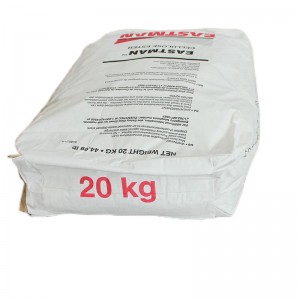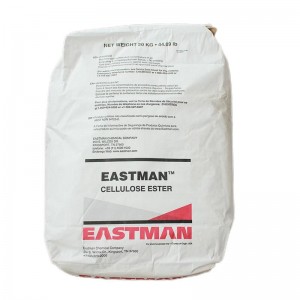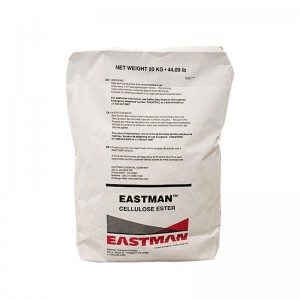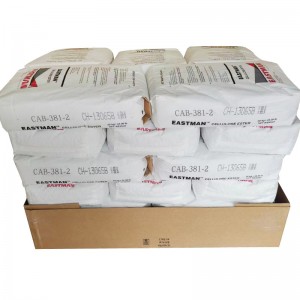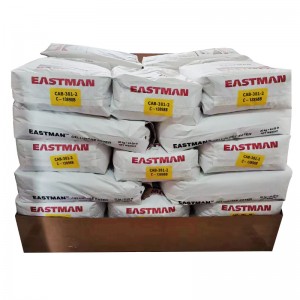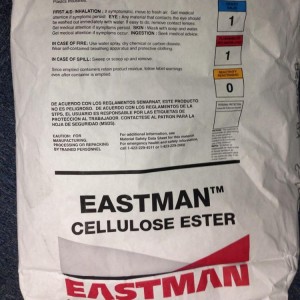Eastman cellulose acetate butyrate CAB-551-0.2
| Property | Numerical value ,unit |
| Butyryl content | 38% |
| Acetyl content | 13.5% |
| Hydroxyl group content | 1.30% |
| Viscosity | 2 seconds per 7.6 pokes |
| Colour | 125ppm |
| Light fog | 35ppm |
| Refractive index | 1.475 |
| Melting point | 171-184℃(340-363℉) |
| Specific gravity | 1.2 |
| Weight /volume ratio | 1.2 kg /l(10 lb /gal) |
| casting | 352 kg/m3 |
| Dielectric strength | 787-984kv/cm |
| Glass transition temperature (Tg) | 133-271℃ |
| Molecular weight Mnf | 20000 |
Cellulose acetate butyrate (CAB) is widely used in the coating industry and has its unique characteristics, which is difficult to be replaced by other chemicals. In the automobile and furniture industry, it has excellent weather resistance and UV light bow; CAB varnish does not yellow, cold weather does not crack. Excellent flexibility in leather coating; In the ink is putty, and other resins have excellent miscibility, leveling and anti “runny nose”. In aluminum. Copper. Add CAB to silver and other metal coatings. It can accelerate the release of solvent from paint film. Touch drying time can be greatly reduced. In thermoplastic acrylic type air-dry paint coating. This performance is more prominent. Because the CAB has a hydroxyl group. It can react with amino resin in the presence of acid catalyst. It does not affect the hardness and gives the film flexibility. And this kind of varnish has good adhesion. Gives the coating an extremely high gloss. The addition of CAB to the coating can enhance the wear resistance. Color stability. And make the car paint bright and beautiful. Improve leather resistance to cold cracking and so on.




